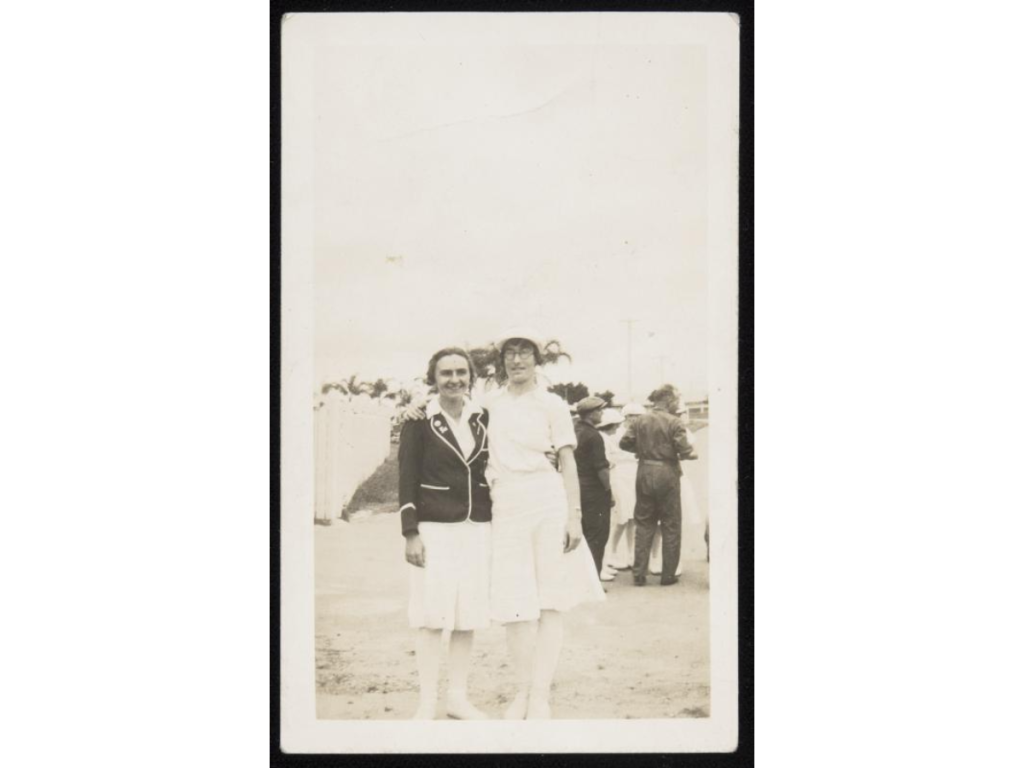Most of us know the name of the 152nd woman to represent Australia – Ellyse Perry.
But few of us know the name of the player who was the 8th woman to represent Australia.
Her name was Lorna Kettels and she was a member of Youlden’s women’s team in the 1930s.
At the recent 100th anniversary celebration of Youlden-Kensington CC (one of our founding parents) author Dr Marion Stell gave a wonderful talk about the role women have played in saving Australian cricket.
Youlden has played a part in this history.
Here’s Marion’s talk in full. Enjoy!
******
Dr Marion Stell, Keynote Speech to Youldens 100th Anniversary
18 February 2023
Tonight I want to tell you a story about a bookmaker, a butcher and a cricketer – all associated with your club.
But first let me begin with a quote from the 19th century Scottish poet and novelist Andrew Lang which I included in my book:
“Cricket is a very humanising game. It appeals to the emotions of local patriotism and pride. It is eminently unselfish; the love of it never leaves us and binds all brethren together, whatever their politics and rank may be” [p29]
I want to introduce you to some important local characters associated with the history of your club who epitomise the emotions of local patriotism and pride, and who I also write about in my book – they are Australian Test player, the cricketer Lorna Kettels, bookmaker and philanthropist Harry Youlden and cricket coach and local butcher Ernie Spencer. This is how the lives of the cricketer, the bookmaker and the butcher are interwoven in your club’s past.
The young cricketer Lorna Kettels played for the Youldens Club back in the early 1930s, nearly 100 years ago. She was very tall and wore distinctive round glasses. A stylish batter and fast-medium bowler, Lorna was a selected in the very first Australian women’s Test team in 1934; she holds Australian Cap number 8. Although many people think women playing cricket is a recent occurrence, the first Test matches between women were held in Australia in the summer of 1934-35 when the English women first toured here.
Now, I had the great pleasure of actually meeting and interviewing Lorna back in 1990 when I tracked down the women who played cricket for Australia in the 1930s. This was part of a project that identified and interviewed 9 women from this period and collected their cricket memorabilia for the National Museum. When I met Lorna in 1990 she was then 78 years old and we sat and chatted at her home in Kensington over a cup of tea. Despite being part of an elite group of talented cricketers Lorna was very modest and was quite shy talking about her achievements, she was reluctant to brag (You might say this was in contrast to the hubris of some other cricketers in their reminiscences, where the bowling gets faster, the runs more prolific and the catches more spectacular!)
Originally, Lorna Kettels was asked to fill in for a cricket team in Kensington that was a girl short. One of the team members, Nellie Rigg, who lived down in the lower part of Kensington, knew the bookmaker Harry Youlden. Lorna recalled: ‘She approached him and he said if we formed a women’s team he would set us up with the matting and the bats and the pads, and that’s how we started off in our cricket career’. Truth newspaper described Youlden in 1931 as ‘one of the biggest men in the Victorian betting arena’; in fact he was one of the top-six bookmakers at the time in Victoria. Harry Youlden had married Irene Burns, who had grown up in Kensington. Their daughter, named Joy, was a champion school athlete at Firbank Girls Grammar, where Harry saw her win races before his death in 1935. The Youldens team funded by the philanthropist bookmaker became a fixture in the Melbourne cricket scene for women around Kensington.
Lorna recalled: the team was based ‘down where the army base is in South Kensington’, where a pitch already existed. ‘I think we were allowed to have it for nothing. Mr Youlden might have financed it, but it was matting over concrete, so you can imagine.’ Lorna remembered the coir matting being in two pieces, which the players had to roll out onto the pitch whenever they played and peg it down on the sides.
Lorna Kettels had played rounders and basketball at Kensington State School, but cricket was not offered. The Kettels were not a sporting family – she recalled ‘I had one sister and a brother and I was the only one who played sport’ – but both parents thought it was ‘marvelous’ when Lorna joined the cricket team. She said ‘Dad used to go with me every Saturday if and when he had the time off from work he used to watch me play. Mum and my sister never missed the Test matches or interstate matches when they were on, they were always good.’
In the 1930s Lorna travelled by train to play against the other teams in her competition, to Albert Park, to Clifton Hill, to Brunswick. The standards of the grounds they played on she described as ‘a bit rough at times, bumpy’. With no local newspaper, Youldens relied on contacts to fill the team. Lorna recalled recruitment being ‘mainly with girls that I used to go to school with. ‘I got in touch with them.’ The team was coached by the local North Melbourne butcher Ernie Spencer. Lorna explained his involvement: ‘He used to live on top of the hill on Kensington Road and we used to play on the flats down below and he was interested. We asked and he decided yes and he came down to coach us.’
Ernie Spencer was more than just a friendly butcher. He had played for the Victorian men’s cricket team against New South Wales in the 1911–12 season. The Melbourne Sporting Globe in 1926 described him as a ‘safe and consistent’ batter, but he was passed over for state selection, a situation that left him ‘heartbroken’. He continued as a pennant cricketer. When his father died, he was left with two butcher shops to run. Known for hitting the ball hard, Spencer favoured forceful drives off the fast bowlers in front of the wicket ‘with excellent timing and powerful strokes’. Lorna and her teammates at Youldens were in good hands, but their own commitment was also core to their team’s success. Lorna recalled:
We used to eat sleep and drink cricket in those days. Sunday morning was a big day, we had practice and then, more often than not, we had a social game with somebody in the afternoon. We used to come down after work at night in the summertime, perhaps Tuesday and Thursday nights after work, if you could get there.
In addition, Lorna put up a string with a ball hanging in a stocking on the clothesline in her backyard at home to practise batting between the team events. Her dedication paid off.
The selector of the Victorian team, Dot Debnam, described Lorna in the Argus as having a ‘beautiful batting style and is not afraid to punish loose bowling. She is smart in the field.’ Sports journalist Pat Jarrett, writing in The Herald, described her thus: ‘Lorna Kettels has a beautiful style with the bat and has impressed … she plays a solid hand and defends her wicket well.’ Several years later Jarrett wrote that Lorna was ‘the stylist of the team … Lorna Kettels has better footwork than any player in women’s cricket … She is also versatile in the field and is a fast medium bowler.’
Lorna described her cricket uniform as a divided skirt an inch or two inches below the knee, white cotton stockings worn with a suspender belt and a white cap, She recalled: “We used to wear boots, boots with sprigs in them only for batting on turf you couldn’t bat on the coir matting with them because you would get stuck”. Her employer in a drapery business allowed her to take her annual leave to coincide with her cricket, but she said “it did interfere in the finish and I was asked to leave, it was too much time off”.
Before she played for Australia, Lorna of course played for Victoria and she had top scored in the national championships with 91 runs where it was reported “she batted delightfully, with stokes all round the wicket”. During their tour of Australia in 1934 the English team played the state teams and three Test matches. Selected for the Victoria versus England game at the MCG in 1934 she opened the bowling and took the first wicket, that of English opener Betty Snowball. Lorna batted for Victoria at first drop but was run out after scoring 4 singles.
She was selected to play for Australia in the first Test match of a three match series against England in 1934-35. She travelled by train to Brisbane for the first Test and was helped financially through fundraising by her Youldens club and team mates. She batted at number 8 and scored 9 runs in the first innings (which although small, was actually the second highest score in an Australian total of only 47), but was out for a duck in the second innings; her bowling was economical and she took a safe catch. She was unlucky to be dropped for the second test, but played in the third test match at the MCG where she was out for 9 and 1. Her record wasn’t spectacular but England had easily won the first two Tests and Australia had drawn the third, helped largely by her economical bowling.
When an Australian team was selected two years later to play a return series in England in 1937, Lorna was not selected, but she still unselfishly donated money to help send the Victorian members of the team to England. She continued playing but retired in 1939 when she married – she described her cricketing years as important in her life, and talked about the opportunities cricket had given her in work and travel. During the second world war she generously donated her Australian cricket blazer in a clothing drive for England – joking with me that at least her blazer was selected for a trip to England.
Lorna donated a collection of her cricket memorabilia to the National Museum in Canberra in 1990 that included her scrap album, photographs, cricket programs and signed dinner menus. What we chose to keep and collect from our careers, often after many house moves, speaks to how important we regard the event in the context of our whole lives.
So some of you might be thinking, you did these interviews and collected this memorabilia in 1990, why did it take you so long to write this story about Lorna and her remarkable team mates from the 1930s.
Well, sitting at the Melbourne Cricket Ground on International Women’s Day in 2020, I was among a jubilant and record crowd of 86,174 who watched the Australian women win the T20 Cricket World Cup Final, no doubt many of you were there also. It was a night that did much to restore the good name and reputation of cricket – a reputation that had recently been tested and tarnished by the Australian men’s cricket team during their tour of South Africa, caught with sandpaper in their pockets and fair play absent from their hearts. One journalist remarked that the women’s victory was the good news story that cricket sorely needed.
For me that night was a bridge to the past. My thoughts returned to the women who had played at the MCG against England in the first Test match series between the two countries in 1934. Now some striking similarities occurred to me. The first women’s series, coming so soon after the controversial men’s Bodyline series, had also done much to restore the game in the eyes of the cricket-loving public. Most of you will be familiar with aspects of the Bodyline series – when the English men’s team arrived in Australia in 1932-1933 with Douglas Jardine as captain and a tactic to use 4 fast bowlers including Harold Larwood to bowl at the body rather than at the wicket. After several Australian batters were injured a huge outcry erupted. The long traditions of cricket built on fair play and sportsmanship had been shattered and controversy raged in the media. Relations between Australia and England were seriously threatened. At the same time a group of women, including Lorna Kettels, was asked to play for their country and demonstrated not only that they could play elite cricket to a high standard, but through fair play, friendships, and commonalities of purpose between the two countries they could help restore the integrity of the game among the cricket-loving public and help mend fractured empire relations. Throughout the tour in 1934 women had demonstrated how cricket should be played.
So, I unearthed all the recordings I had made of the women cricketers from the 1930s. Listening to the women’s voices again, I realised their story was wider, more relevant and significant than just a handful of cricket games. So thirty years after conducting the original interviews, I wrote their stories taking into account the historical context of the 1930s and their surprising role in helping to fix the Bodyline controversy.
Local people, like Lorna Kettels, Harry Youlden and Ernie Spencer, are integral to this story. While big money has entered both the women’s and men’s elite cricket, especially in the T20 form, community clubs remain the bedrock of the game which can only survive with the ‘local patriotism and pride’ of clubs like your own. I hope today you are proud to have Lorna Kettels, one of the first Australian women Test players, in the history of your club. She is one of your bridges to the past and hopefully to the future. Congratulations on 100 years.
Drawn from Marion Stell, The Bodyline Fix: How Women Saved Cricket, University of Queensland Press, 2022



